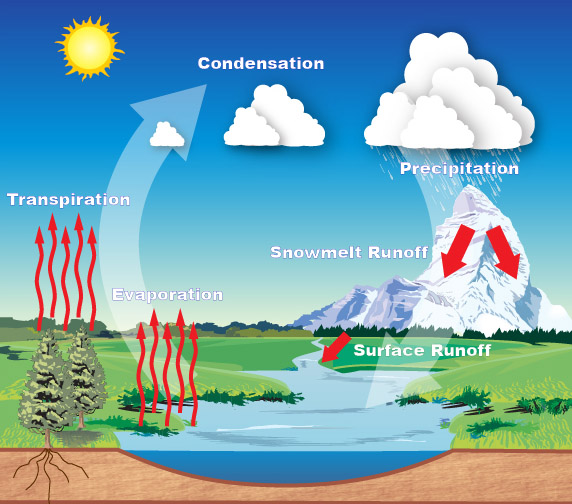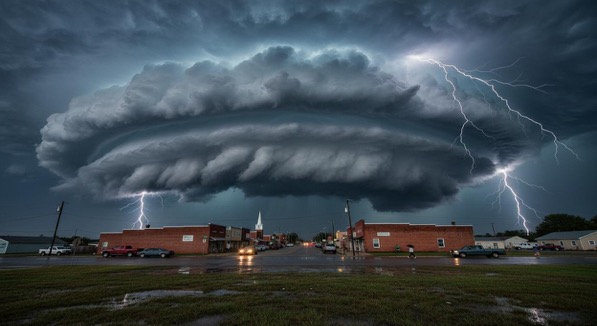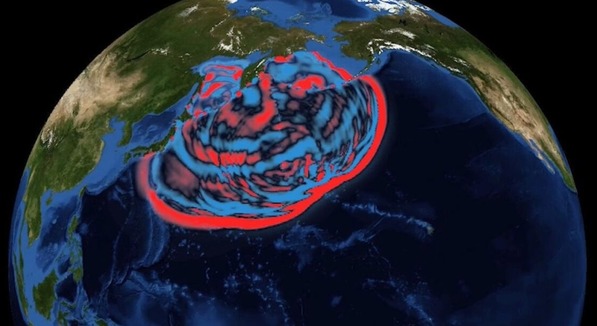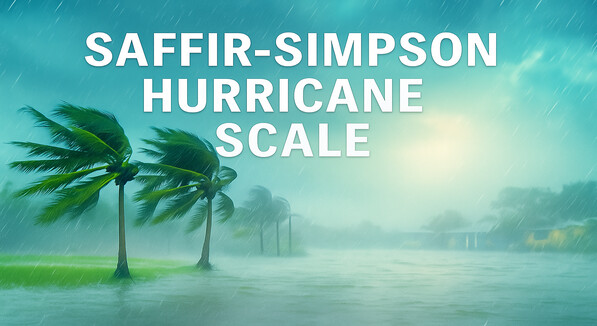
The hydrologic cycle involves the continuous circulation of water in the Earth-Atmosphere system. At its core, the water cycle is the motion of the water from the ground to the atmosphere and back again. Of the many processes involved in the hydrologic cycle, the most important are…
- evaporation
- transpiration
- condensation
- precipitation
- runoff
Evaporation
Evaporation is the change of state in a substance from a liquid to a gas. In meteorology, the substance we are concerned about the most is water.
For evaporation to take place, energy is required. The energy can come from any source: the sun, the atmosphere, the earth, or objects on the earth such as humans.
Everyone has experienced evaporation personally. When the body heats up due to the air temperature or through exercise, the body sweats, secreting water onto the skin.
The purpose is to cause the body to use its heat to evaporate the liquid, thereby removing heat and cooling the body. It is the same effect that can be seen when you step out of a shower or swimming pool. The coolness you feel is from the removing of bodily heat to evaporate the water on your skin.
Transpiration
Transpiration is the evaporation of water from plants through stomata. Stomata are small openings found on the underside of leaves that are connected to vascular plant tissues. In most plants, transpiration is a passive process largely controlled by the humidity of the atmosphere and the moisture content of the soil. Of the transpired water passing through a plant only 1% is used in the growth process of the plant. The remaining 99% is passed into the atmosphere.
Condensation
Condensation is the process whereby water vapor in the atmosphere is changed into a liquid state. In the atmosphere condensation may appear as clouds or dew. Condensation is the process whereby water appears on the side of an uninsulated cold drink can or bottle.
Condensation is not a matter of one particular temperature but of a difference between two temperatures; the air temperature and the dewpoint temperature. At its basic meaning, the dewpoint is the temperature where dew can form. Actually, it is the temperature that, if the air is cool to that level, the air becomes saturated. Any additional cooling causes water vapor to condense. Foggy conditions often occur when air temperature and dewpoint are equal.
Condensation is the opposite of evaporation. Since water vapor has a higher energy level than that of liquid water, when condensation occurs, the excess energy in the form of heat energy is released. This release of heat aids in the formation of hurricanes.
Precipitation
Precipitation is the result when the tiny condensation particles grow too large, through collision and coalesce, for the rising air to support, and thus fall to the earth. Precipitation can be in the form of rain, hail, snow or sleet.
Precipitation is the primary way we receive fresh water in earth. On average, the world receives about 38?” (980 mm) each year over both the oceans and land masses.
Runoff
Runoff occurs when there is excessive precipitation and the ground is saturated (cannot absorb anymore water). Rivers and lakes are results of runoff. There is some evaporation from runoff into the atmosphere but for the most part water in rivers and lakes return to the oceans.
If runoff water flows into the lake only (with no outlet for water to flow out of the lake), then evaporation is the only means for water to return to the atmosphere. With evaporation only pure water evaporated, and therefore any contaminates and salts are left behind. The result is the lake becomes salty as in the case of the Great Salt Lake in Utah or Dead Sea in Israel.
Evaporation of this runoff into the atmosphere begins the hydrologic cycle over again. Some of the water percolates into the soil and into the ground water only to be drawn into plants again for transpiration to take place.



